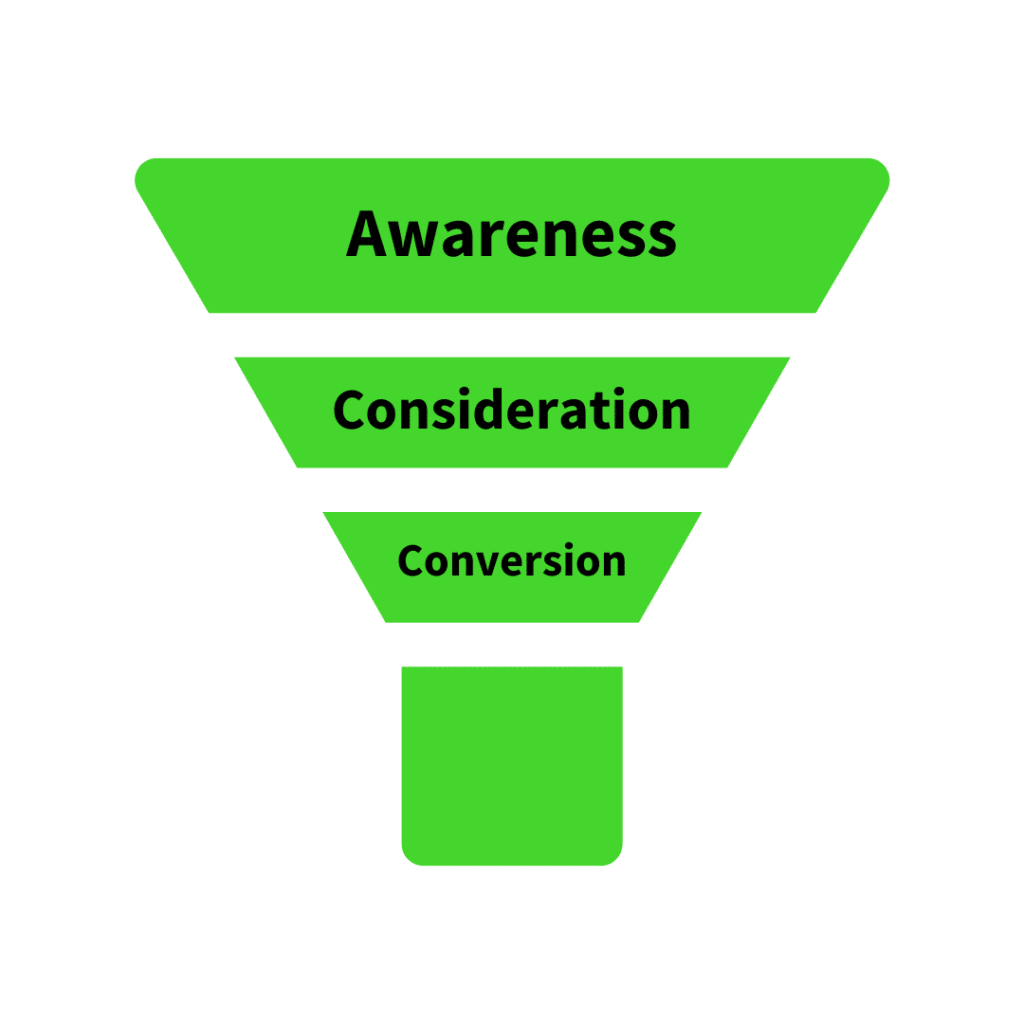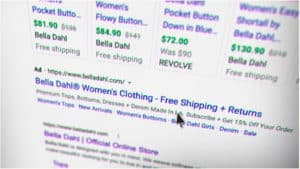Do you know why supermarkets keep candy at the checkout counter and why casinos have no windows and clocks? By the time they reach checkout, most people have exhausted their daily supply of self-control (after fighting the urge not to buy useless things) and are more prone to give in to impulse-buying temptation. Casinos don’t have windows or clocks because they want their patrons to “lose track of time.”
These are not examples of funnel campaigns, also called sales funnels, per se, but the concept is extrapolated from the same idea: Subconsciously nudging consumers into spending money.
A sales funnel a consumer’s journey from awareness to purchase. A sales funnel a consumer’s journey from awareness to purchase. The difference is that funnel campaigns on the internet are relatively more elaborate. The concept behind developing and running a funnel campaign is to “funnel” a cold lead down to making a purchase.
You can create a funnel campaign to make any product/service sales, but nowadays, the term is almost synonymous with Facebook ads funnel.
Facebook Ads Funnel Campaign
A Facebook Ads funnel can typically be divided into three elements:
Awareness: That starts by attracting viewers on Facebook (or other platforms). These people can be considered cold leads since they may want to buy your product or even know about it. Then within the awareness part of your funnel campaign, you turn these cold leads into warm – Showing a bit of interest (prospects). Once they are aware and interested in your product/services, you’ve successfully pushed them through the first part of the funnel. It’s sometimes referred to as the top-of-the-funnel campaign.
Consideration: The middle of the funnel is where your prospects might consider buying your products. Your content or paid ads will likely convert a hot audience into actual buyers. You have to work on building up their interest.
Conversion: The bottom of the funnel is when the prospects make up their mind and decide to buy your product or services. These are the individuals who complete the whole journey through your funnel. They start from cold leads to warm prospects, show active interest, and finally buy. Ideally, you can keep them as repeat/loyal customers so that you don’t have to run through the funnel repeatedly.
Facebook is one of the few platforms where you can create a funnel campaign. Ironically, Facebook is also where people are more interested in hanging out and socializing than buying. No one likes ads shoved on their feeds when they want to check out what their friends are up to and maybe like and comment on a few posts.
This is important because you must understand their default mindset to draw more prospects into the funnel. Blatant and annoying ads might not let you attract cold leads, but engaging and subtly “sales posts might.

How to Create A Funnel Campaign
Identifying your target audience is one of the first steps in creating a successful funnel campaign. Your target audience can include multiple personas (foodie Millennials, homemakers, etc.), but unless you know who you are pitching to, you will never be able to convert strangers into leads. It doesn’t need to be variations of one persona.
At the top of your funnel campaign (awareness), you need people to know about you. From your personas, you would know who these people are; they are the ones you will target as you create (and save) your audience page. You can also use Facebook’s impressive “lookalike audience” feature to expand your target audience pool. Then you have to straighten out your funnel campaign objectives, divided into three categories awareness, consideration, and conversion. They are further divided into brand awareness, reach, traffic, engagement, catalog sales, etc. The objectives are imperative, as they help algorithms identify the best prospects for your campaign.
When creating ads for your cold leads, try out multiple formats (infographics, images, videos, posts, etc.). This will allow you to get through the bulk of your cold audience, hopefully turning them into prospects.
From there, you can lead your prospects to the middle of the funnel, hopefully right onto your website’s landing page. You can entice them with different content, offer, and ads here. Your goal here is to drive maximum traffic to your website, better engagement, messages, and, ultimately, conversions.
How you incentivize your audience matters. It can be free white pages, informational webinars, demos, discounts, or giveaways.
At the bottom layer of your funnel, you can identify which prospects (based on what pages they landed on, their expression of interest, etc.) can turn into customers and those who are still reluctant. By focusing on the former, you can start producing practical conversions.
Conclusion
A Facebook Ads Funnel is as good as your content and campaign plan. Also, connect your website to Facebook Pixel to track conversions. It will help you properly analyze your campaign’s ROI and Facebook’s algorithms to become even better at optimizing your funnel campaign.


